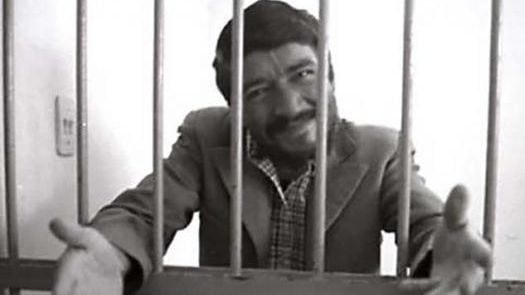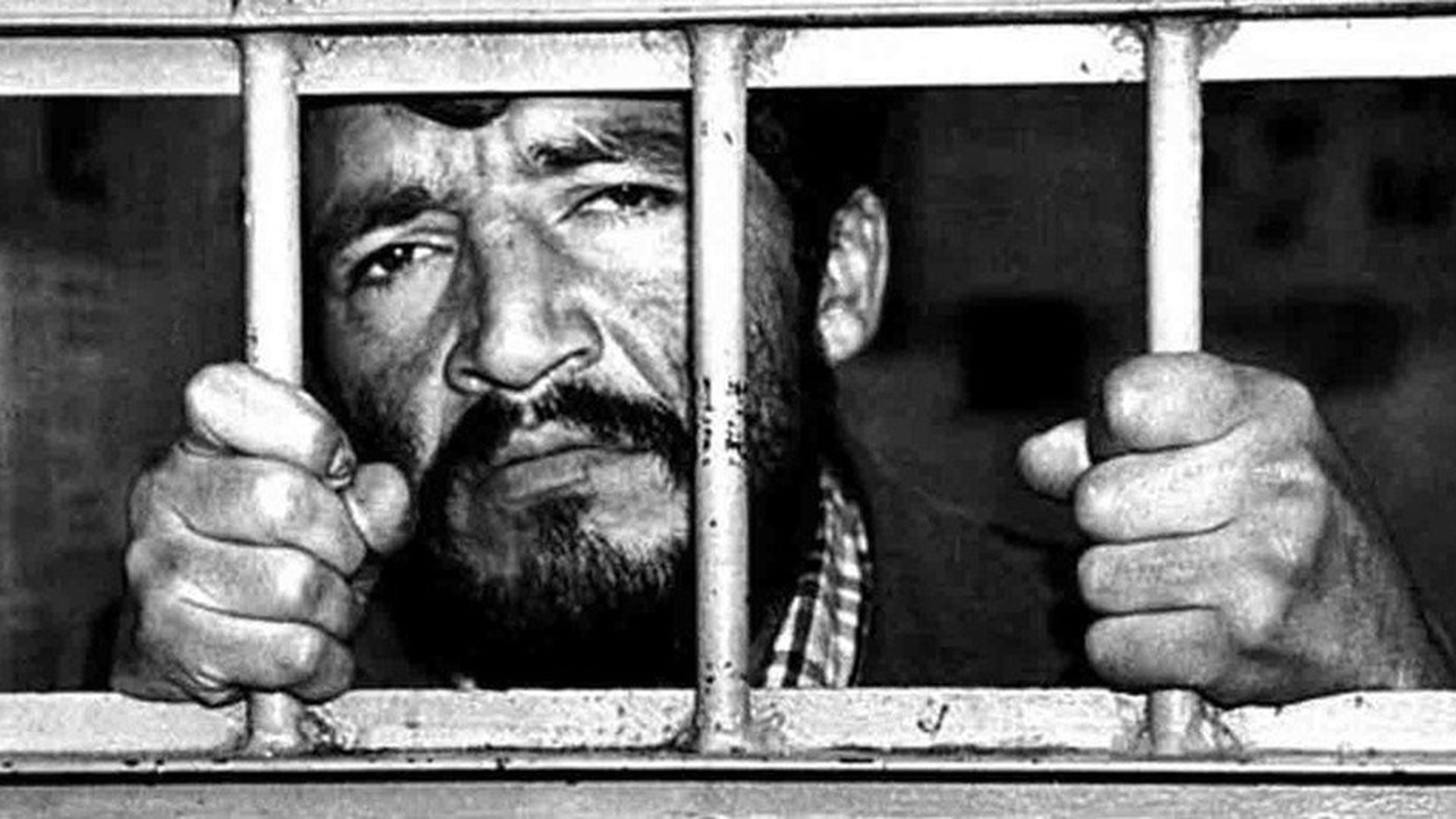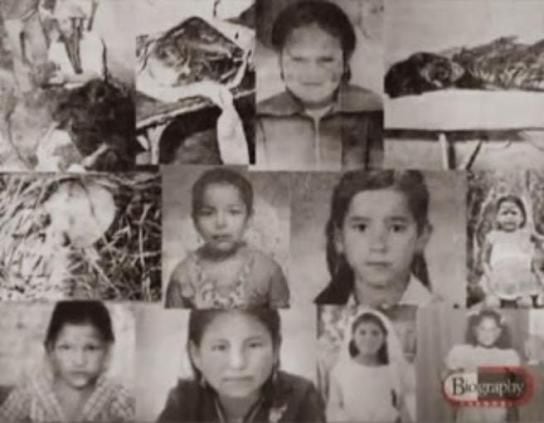:quality(85)/cloudfront-us-east-1.images.arcpublishing.com/infobae/UHBCZNKUDVDU5M325OOACEYMTA.jpg 420w)
He walked quietly looking for his next victim in a supermarket in Ambato. He laid eyes on a 12-year-old girl, took her in his arms and ran out of the place. The mother's screams alerted the customers and the workers of the establishment. Just when he was on the run with the minor, he was caught and handed over to the authorities. They had just prevented the death of Mari, who would have been the victim of Pedro Alonso López, better known as 'the monster of the Andes', a kidnapper who raped and killed more than 300 minors in Colombia, Ecuador and Peru.
He was born on October 8, 1948 in the Colombian municipality of Venadillo, Tolima. He was the seventh son of 13 siblings. She had an unhappy childhood: her mother was a prostitute and, living in a one-room house, only a curtain separated the place of the woman's sex work with the space where her children slept, so it was common for her to hear the groans with the parishioners.
When he was 9 years old he tried to rape his younger sister, when his mother found out, he threw him out of the house. He became a wanderer in the streets of Bogotá. He was constantly raped by men who allegedly wanted to help him, and he had to learn to survive: he learned to fight with knives, started smoking basic cocaine paste, robbed houses and searched the garbage for food.
At the age of twelve, Pedro thought he found a way out when he was adopted by a couple of Americans. He was learning to socialize with his new family and new friends, but he returned to the streets when a teacher at his school raped him. It was promised that he would no longer return to a foster home and returned to crime.
At the age of 21 he was sentenced to seven years in prison for robbery. In prison, he became the prisoners' sex toy, but one day he got tired of the situation: he cut his aggressors throats and realized the pleasure of killing him.

TRIP TO PERU
When he served his sentence and was released from prison, Pedro traveled to Ayacucho, in Peru. He chose Andean girls “who had the most innocent eyes,” he explained in his detention, and offered them gifts to accompany him to the countryside.
Already far from the villages, his ritual began.
“I forced the girl to have sex with me and put my hands around her throat. When the sun rose I strangled her. (...) It was only good if she could see her eyes. I never killed anyone at night. It would have been a waste in the dark, I had to see them in the light of day (...). There was a divine moment when I put my hands around the girls' necks and watched the light go out of their eyes. Only those who kill know what I mean,” he told the police at his demonstration.
After he outraged them, he strangled them to kill them; he practiced necrophilia on their lifeless bodies, and hid them or buried them so as not to be discovered. In his vision, he did not kidnap white girls because “their parents watched too much”, so he addressed Andean minors.
It is known that in Peru he killed about 100 girls between 9 and 12 years old, and there he began to be called as the 'monster of the Andes'.
A group of Ayacucho residents suspected him until they captured him when he wanted to kidnap a minor.
“The Indians in Peru had tied me up and buried me in the sand up to my neck when they found out what I had been doing to their daughters . They had covered me with honey and were going to leave me to be devoured by ants, but an American missionary lady came in her jeep and promised them that she would turn me over to the police,” he said.
He had seen death up close as many times in the streets of Bogotá when he was a vagabond and criminal.
He and the missionary moved away. She let him go. But there is the other version: he took him to the Peruvian authorities, but since they were not interested in what happened to the indigenous communities in Ayacucho, they ended up deporting him to Ecuador. There Pedro escaped and settled in Ambato.
MURDERS IN ECUADOR
Between 1978 and 1980, the number of disappearances of girls was increasing in Colombia and Ecuador. For the police in these countries this was about the increase in human trafficking and sexual slavery and they never noticed a serial killer like the 'monster of the Andes'. Until 1980 came.
A flood that flooded the Ecuadorian city shed light on four bodies of missing girls who forensics determined had been killed. This generated an alert and an investigation to find the criminal, but there was a problem: they didn't have any suspects, much less any data.

CAPTURE, DETENTION AND FREEDOM
Searches continued in Ecuador to find someone, but the clues were unfinished and crashed with endless doubts. But the 'Andes monster' made a mistake when he wanted to kidnap the girl Marie in a supermarket.
He was captured, but refused to confess to the crimes. He was the culprit, but he kept his mouth shut for several days. The investigators reviewed the case to find a way out and found the Catholic faith that the murderer professed very hard. The only solution was to talk to the priest Córdoba Gudino. There, in front of him as in a confessional in an English woman, he told her everything.
“He confessed to me acts so horrible, beastly and violent that I couldn't listen to him anymore. First he raped the girls and then strangled them by staring them in the eye because at that moment sexual arousal and pleasure reached their peak, before their life withered,” said the priest, who was not out of his amazement.
The police continued to question him. He justified his crimes because of his hard childhood with his mother and adolescence on the streets.
“I lost my innocence at the age of eight, so I decided to do the same to as many young girls as I could (...)”. He preferred Ecuadorian women because “they are more docile and more confident and innocent, they are not like Colombian girls who suspect strangers,” he said.

In his confession, he said that when the girls were dead, he dug a hole and buried them in groups of three or four, and then went to visit them, whom he named “dolls” and it was common for me to 'talk' with the corpses, but “since they couldn't move, I got bored and went to look for new girls.”
Pedro explained that the murders caused him deep pleasure and “the deepest sexual arousal before his life withered.”
The police began to doubt their testimony, but the 'Andes monster', with ego, directed them to different places to unearth the victims: they found a total of 74 bodies, girls between 8 and 12 years old, with signs of having been violated, but Pedro said there were more, that there were 110. Thus, between Peru, Colombia and Ecuador, he murdered more than 300 minors.
He was sentenced to 16 years in prison, which in 1980 was the maximum penalty in Ecuador for such crimes. He was imprisoned until 1994, he was extradited to Colombia for trial, but the magistrate found him “insane”, and therefore, unimputable. He was sent to a psychiatric hospital where he stayed for four years, imposed a fifty dollar bail, the obligation of psychiatric treatment and monthly follow-up of his case before a judicial authority. He never did anything. As soon as he was released, the 'monster of the Andes' disappeared and his whereabouts have been unknown since 1998.
It didn't matter that in the psychiatric center he said these phrases: “The moment of death is exciting, and exciting. Someday, when I'm free, I'll feel that moment again. I'll be happy to kill again. It's my mission.” Or that the psychological examinations carried out on the criminal revealed that he was a “sociopath” with an “antisocial personality disorder”, without “conscience” or “empathy”, with great ability to deceive and manipulate through his words.
Four years later, in 2022, Interpol issued a search and arrest warrant for Pedro Alonso López because of the similarities to the murder of a minor in El Espinal, one of the areas where it recruited girls. And in 2012 in the Colombian municipality of Tunja, another minor was found to have her throat cut. The murders followed the same 'modus operandi' as the 'Andes monster'.
THE LAST VISIT TO HIS MOTHER
“Mother, get down on your knees and I'm going to give you a blessing,” Peter told her when he visited his mother. He was not violent, nor was the fault of his childhood and adolescence. He demanded money from him and never saw him again. For her, he is still alive despite the fact that 23 years ago his whereabouts were unknown.
“I know he hasn't died. Other relatives of mine appeared to me in the form of a 'presence' after they died. But he didn't. I know it's still there somewhere, ” he said.
It is estimated that he murdered just over 350 girls. There is no exact number for the victims who were attacked by this psychopath. Interpol is still looking for who would be the serial killer with the most victims, even surpassing Harold Shipman, the affable English GP who killed 235 people.
KEEP READING
